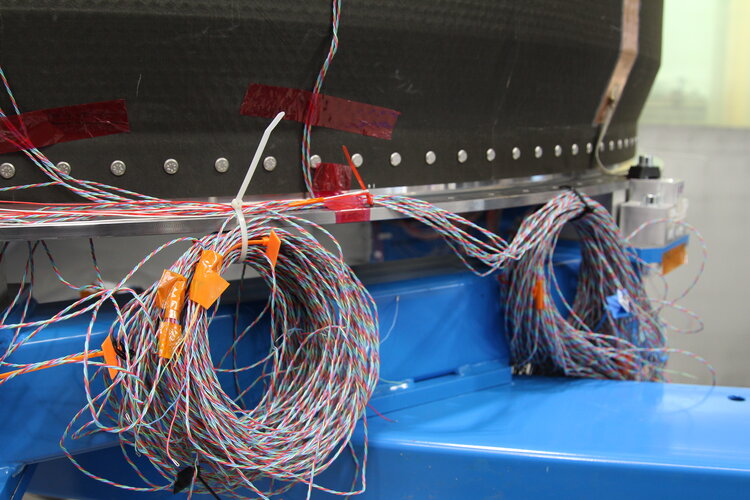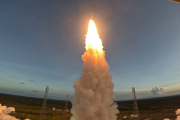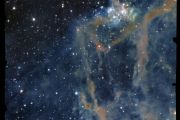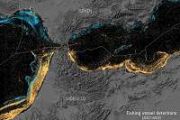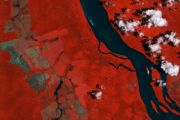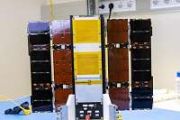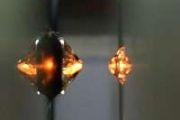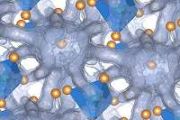
Copernical Team
Hera's wings of power
 The solar wings that will power ESA's Hera asteroid mission for planetary defence as it ventures out to meet the Dimorphos asteroid have been cleared for flight. As part of its current test campaign at ESA's ESTEC Test Centre in the Netherlands, the spacecraft commanded the deployment of the wings one at a time, as it will do in space directly after launch - known as a 'hot deployment'.
Th
The solar wings that will power ESA's Hera asteroid mission for planetary defence as it ventures out to meet the Dimorphos asteroid have been cleared for flight. As part of its current test campaign at ESA's ESTEC Test Centre in the Netherlands, the spacecraft commanded the deployment of the wings one at a time, as it will do in space directly after launch - known as a 'hot deployment'.
Th Rocker-Bogie Around the Marsmas Sea: Sols 4041-4042
 Earth planning date: Monday, December 18, 2023: On the 4040 sol of Marsmas my downlink gave to me, a faulted drive and a wheelie! That's right, folks, we're popping Christmas-sized wheelies this year, bigger than we've ever seen before! It's a little hard to tell from the Navcam perspective, but the cover photo above shows our right-middle wheel (bottom in image) completely off the ground in sus
Earth planning date: Monday, December 18, 2023: On the 4040 sol of Marsmas my downlink gave to me, a faulted drive and a wheelie! That's right, folks, we're popping Christmas-sized wheelies this year, bigger than we've ever seen before! It's a little hard to tell from the Navcam perspective, but the cover photo above shows our right-middle wheel (bottom in image) completely off the ground in sus Zhurong Rover Unveils Ancient Polygonal Terrain Under Mars' Utopia Planitia
 A team of researchers from the Institute of Geology and Geophysics of the Chinese Academy of Sciences (IGGCAS) has made a significant discovery using the Zhurong rover's ground-penetrating radar on Mars. Their study, conducted in the expansive Utopia Planitia region, reveals buried palaeo-polygonal terrain, suggesting that this area experienced considerable climatic variability in ancient Martia
A team of researchers from the Institute of Geology and Geophysics of the Chinese Academy of Sciences (IGGCAS) has made a significant discovery using the Zhurong rover's ground-penetrating radar on Mars. Their study, conducted in the expansive Utopia Planitia region, reveals buried palaeo-polygonal terrain, suggesting that this area experienced considerable climatic variability in ancient Martia Virgin Galactic sets January 2024 for 11th mission
 Virgin Galactic Holdings, Inc. (NYSE:SPCE) has officially announced the opening of its 'Galactic 06' flight window on January 26, 2024. This mission will mark the company's 11th spaceflight, following a year of remarkable achievements in human spaceflight, including six suborbital missions in just six months.
The upcoming 'Galactic 06' flight is set to continue Virgin Galactic's pioneering
Virgin Galactic Holdings, Inc. (NYSE:SPCE) has officially announced the opening of its 'Galactic 06' flight window on January 26, 2024. This mission will mark the company's 11th spaceflight, following a year of remarkable achievements in human spaceflight, including six suborbital missions in just six months.
The upcoming 'Galactic 06' flight is set to continue Virgin Galactic's pioneering NASA Outlines Future Strategy for Post-ISS Microgravity Research Labs in LEO
 In a recent development marking a significant shift in space research dynamics, NASA is actively developing a strategy for establishing the next generation of microgravity national labs in a commercial space station environment. This move comes in response to a directive from the National Space Council in September 2022, tasking NASA with crafting a plan for this new era in space research.
In a recent development marking a significant shift in space research dynamics, NASA is actively developing a strategy for establishing the next generation of microgravity national labs in a commercial space station environment. This move comes in response to a directive from the National Space Council in September 2022, tasking NASA with crafting a plan for this new era in space research. NASA's 3D-printed Rotating Detonation Rocket Engine Test a Success
 NASA has achieved a new benchmark in developing an innovative propulsion system called the Rotating Detonation Rocket Engine (RDRE). Engineers at NASA's Marshall Space Flight Center in Huntsville, Alabama, successfully tested a novel, 3D-printed RDRE for 251 seconds (or longer than four minutes), producing more than 5,800 pounds of thrust.
That kind of sustained burn emulates typical requi
NASA has achieved a new benchmark in developing an innovative propulsion system called the Rotating Detonation Rocket Engine (RDRE). Engineers at NASA's Marshall Space Flight Center in Huntsville, Alabama, successfully tested a novel, 3D-printed RDRE for 251 seconds (or longer than four minutes), producing more than 5,800 pounds of thrust.
That kind of sustained burn emulates typical requi Mighty MURI brings the heat to test new longwave infrared radiometer
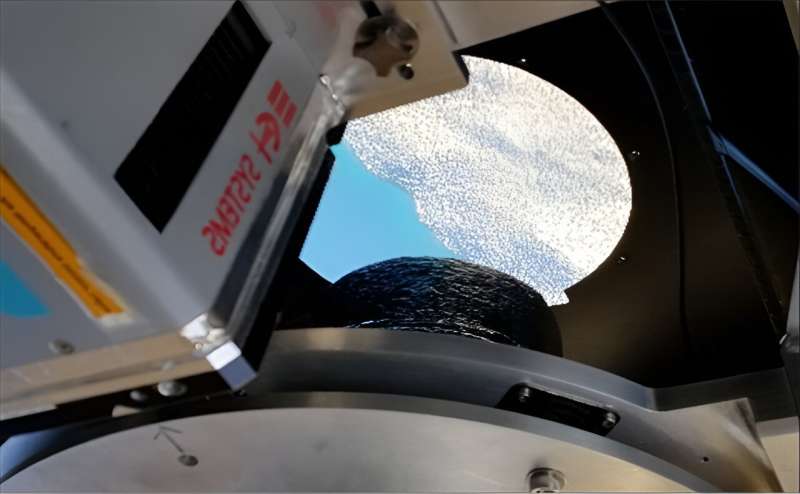
NASA's new Multiband Uncooled Radiometer Instrument (MURI) features a novel bolometer that detects infrared radiation without a cryogenic cooler, greatly reducing the cost and complexity of dispatching infrared radiometers into low-Earth orbit.
First-light data from NASA's new Multiband Uncooled Radiometer Instrument (MURI) shows its novel, uncooled microbolometer is operational, setting the stage for future space missions dedicated to observing Earth's surface temperature with a cost-effective instrument.
Prepping for data from the Nancy Grace Roman Space Telescope
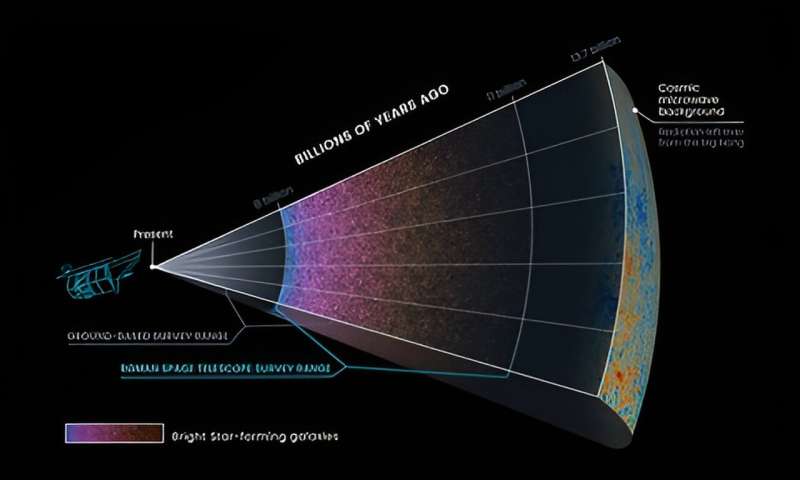
As part of a plan to prepare for the quantity and range of data that will be coming in from the Nancy Grace Roman Space Telescope, currently scheduled to launch by May 2027, NASA has granted funding to five project infrastructure teams (PITs), which will write software, run simulations, and plot out optimal uses of the telescope's data stream.
International astronaut will be invited on future NASA moon landing
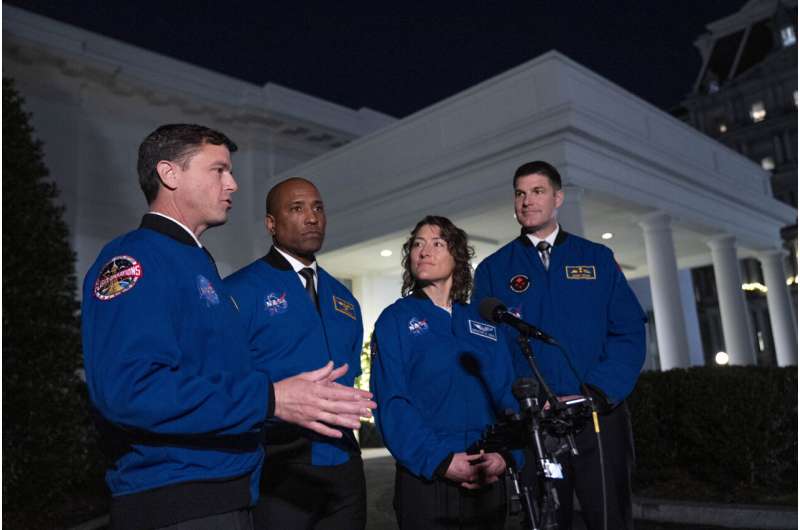
An international astronaut will join U.S. astronauts on the moon by decade's end under an agreement announced Wednesday by NASA and the White House.
The news came as Vice President Kamala Harris convened a meeting in Washington of the National Space Council, the third such gathering under the Biden administration.
Tough tests no problem for carbon-fibre cryo fuel tanks
